Overview
- Features: A pyramid-shaped palace made up of over 900 niches with semi-octagonal windows, carved sandstone grills, finials and domes
- Opening Times: 9am to 4:30pm, daily
- Best Time to Visit: Late October to early March
- Duration: 1 to 2 hours
- Travelled By: Auto rickshaw
- Cost: Foreigner / Indian Rs 50 / 10; composite ticket Rs 350 / 70
- Address: Corner of Tripolia Bazar & Hawa Mahal Road, Jaipur, Rajasthan, India
- Type: Palace
Author Reviews[display_rating_item_results rating_form_id=”2″ rating_entry_ids=”1″ show_category_filter=”false” show_options=”true” result_type=”star_rating” preserve_max_rating=”true” show_title=”false” show_count=”false” ]
Total Rating: [display_rating_result rating_form_id=”2″ show_count=”false” show_rich_snippets=true] [accordions load=”1″] [accordion title=”User Reviews” last] [display_rating_item_results rating_form_id=”5″ show_options=”true” result_type=”star_rating” preserve_max_rating=”true” show_title=”false” show_count=”true” show_rich_snippets=true] [/accordion] [accordion title=”Add Review”][display_rating_form show_email_input=”true” show_comment_textarea=”true” show_name_input=”true” rating_form_id=”5″] [/accordion] [/accordions]
Summary
If you’re heading to Jaipur, you must add Hawa Mahal on your list of places to see as it’s one of the highlights of the old city of Jaipur. Read this post for interesting facts, frequently asked questions and detailed information about Hawa Mahal Jaipur.
Interesting Facts About Hawa Mahal Jaipur
Interesting Hawa Mahal Facts
- Hawa Mahal means Palace of Winds
- Popular for its elaborate and fanciful architecture, Hawa Mahal is an important and dominant landmark of Jaipur
- Located in the old city, Hawa Mahal is part of the City Palace complex of buildings
- It is shaped like a mukut or crown which adorns Lord Krishna’s head
- It also looks like the honeycomb web of a beehive with 953 small, intricately carved jharokhas or windows
- You can get great views of the old city of Jaipur and Jantar Mantar from Hawa Mahal
- Hawa Mahal can be entered on a composite ticket (valid for two days), along with Jantar Mantar, Nahargarh Fort, Amber Fort and Albert Hall
FAQ’s about Hawa Mahal Jaipur
Below are answers to some popular questions asked about Hawa Mahal Jaipur.
When was Hawa Mahal built?
Hawa Mahal was built in 1799.
Who built Hawa Mahal?
Hawa Mahal was built by Maharaja Sawai Pratap Singh and designed by Lal Chand Ustad, the renowned architect of the city of Jaipur.
Why was Hawa Mahal built?
Maharaja Pratap Singh was a devotee of Lord Krishna, a Hindu god, and he dedicated this palace to his deity. It was also built for the ladies of the royal household to watch the daily activities in the streets below.
Where is Hawa Mahal located?
Hawa Mahal is located in the old city of Jaipur in Rajasthan, Northern India.
Hawa Mahal Timings
Hawa Mahal is open daily from 9am to 4:30pm. The best time to visit is on weekday mornings before the crowds arrive by midday. Weekends is the busiest time to visit so expect big groups of local visitors.
Detailed Information About Hawa Mahal Jaipur
[singlepic id=3062 w=720 h=560 float=center]
This five storied pyramid shaped structure is made up of small casements, each with tiny semi-octagonal, overhanging windows with perforated screens, and arched roofs with hanging cornices, exquisitely modeled and carved. Placed one above the other, they have about them an air of lightness and delicate beauty.
This unusual structure is more like a screen than a palace. Its top three stories are just a single room thick and at the base are two courtyards. The elaborate construction in the front stands on walls that are barely 0.2 metre (8 inches) in width. Basically, it is a fifty-foot-high thin shield, which is less than a foot in thickness but have over 900 niches and a mass of semi-octagonal bays, carved sandstone grills, finials and domes, which give this palace its unique facade.
[singlepic id=3071 w=720 h=560 float=center]
The intricate latticework on the windows are more than decorative. Rather, they were created for a specific purpose. Built at a time when ladies of the zenana (royal household) observed very strict purdah (covering the face), this charming palace, with its screened balconies, provided them with an opportunity to watch processions and other activities on the street without being observed themselves.
Hawa Mahal also provides a secondary purpose, and that is to allow cool air to enter through the latticework and thereby air conditioning the whole area during the high temperatures in summer. The cool westerly breeze blowing through the numerous screens have given the palace its name.
[singlepic id=3070 w=720 h=560 float=center]
One very interesting feature of the Hawa Mahal is the fact that the elaborate and decorative element exists only on one side – the front. The inner face of the palace as well as the chambers is quite plain and lacks any ornamentation. The chambers are more a mass of pillars and passages leading to the top storey.
The entry to the palace is from its rear, rather than its front portion. The entry from the city palace side is through an imperial door, and the first structure that one comes across is a spacious courtyard. Surrounding the courtyard on three sides is a double-storied building. The building houses an archaeological museum inside its premises. Only the eastern wing of the Hawa Mahal has three more stories above.
[singlepic id=3066 w=720 h=560 float=center]
The cultural and architectural heritage of the palace is a true reflection of a fusion of Hindu Rajput architecture and Islamic Mughal architecture. The Rajput style is seen in the form of domed canopies, fluted pillars, lotus and floral patterns, and the Islamic style as evident in its stone inlay filigree work and arches.
Apart from the intricate latticework of the windows, the chambers of the top three floors are beautifully decorated inside with Rajput and Mughal influenced artwork. As can be seen in the photo above, a floral pattern painted on one of the ceilings in the chambers is an example of exquisite Rajput art.
[singlepic id=3068 w=720 h=560 float=center]
Of all the architectural details, the one that stands out for me is the multi-coloured glass work in some of the windows of the palace. As we walked around, the evening light streamed through the coloured glass and illuminated and brightened up the room.
Hawa Mahal, the Palace of Winds, still lives up to its name – the cool breeze could be felt as we peered out of the tiny windows and walked by the latticed grills. This is truly a romantic place, and while we walked around we felt it in the air.
In our view, the Hawa Mahal was not a residential palace in its day but more of a viewing hall or resort. In fact, it was known as the chef-d’œuvre of Maharaja Jai Singh as it was his favourite resort because of the elegance and built-in interior of the palace. Today however, it provides us, the visitors, with some excellent views of the city and a bird’s eye view of the Jantar Mantar.
If we were to select the most outstanding of all buildings in the walled city, or the most unusual, then the Hawa Mahal would easily stand out as our favourite.
Tell us what you think. Is Hawa Mahal on your list of places to visit in Jaipur? If you’ve been here before, what did you like best about this attraction?
We love to hear from you so please leave your comments below.


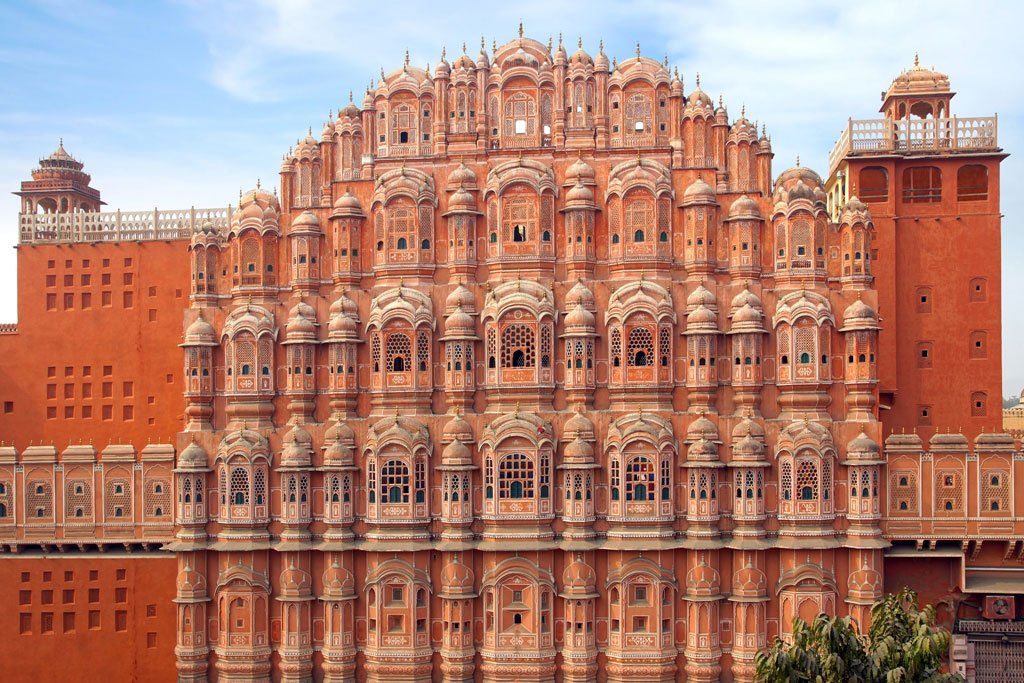

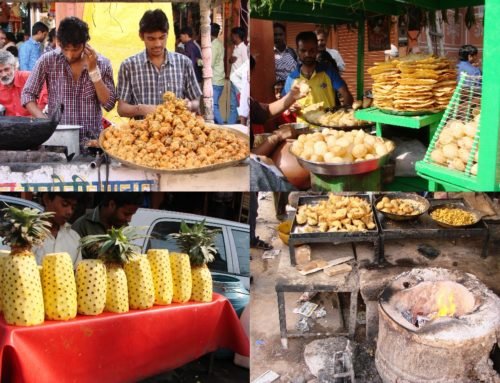
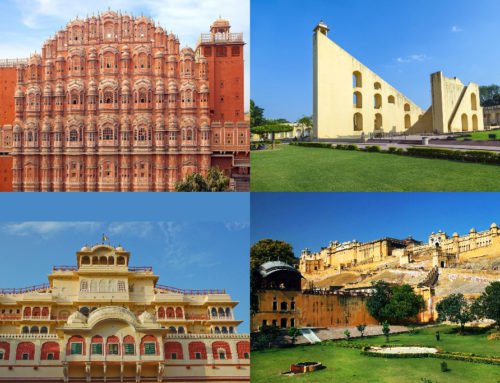
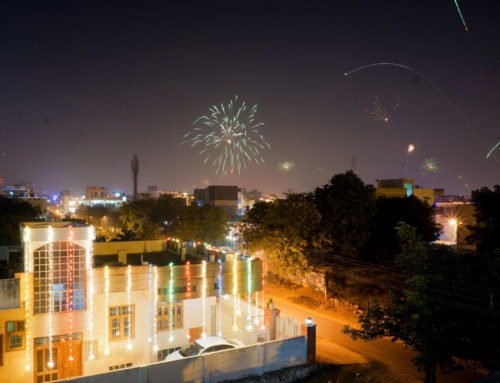
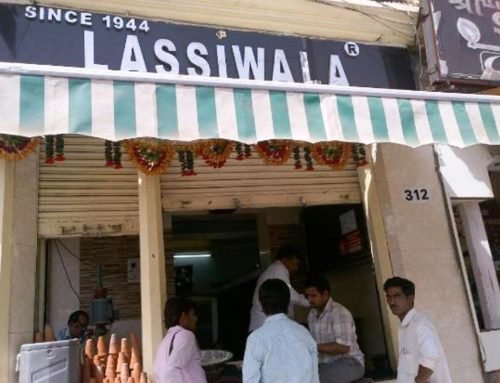
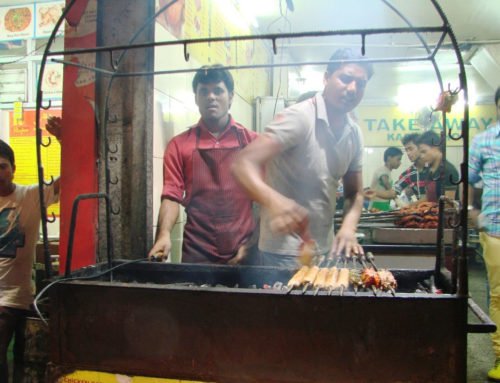
It is really nice Palace. I want to visit there . I like its architecture. It is very very beautiful Palace